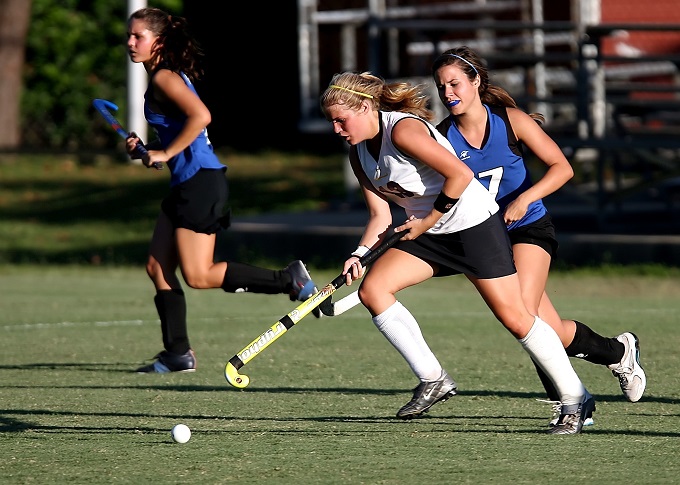Research In Action
Research In Action
Breadcrumb

Athletic trainers, particularly at the secondary school level, are typically the first healthcare providers to identify and evaluate for concussion and are often responsible for the care of hundreds of athletes at any given time. It is critical that comprehensive and easily administered concussion assessment tools are available to better support concussion diagnosis and ease the testing burden on secondary school athletic trainers.
Evaluating the Visio-Vestibular Examination
The Visio-Vestibular Examination (VVE) is a battery of clinical tests assessing visual and vestibular (e.g. balance) deficits, which are common following concussion. Our recently published paper in The Physician and Sportsmedicine sought to evaluate the single-season changes in the VVE in healthy high school and middle school athletes. To do this, we assessed measured VVE performance at pre- and post-season in boys’ and girls’ soccer, basketball, lacrosse, and girls’ field hockey and the high school and middle school levels. We also accounted for head impact exposure by team level and sport using a proxy estimate based on our own previously published data.
VVE Deficits Tied to Concussion
Our primary finding is that visio-vestibular function did not change across a single athletic season in otherwise healthy adolescent athletes. This finding supports our previous research that VVE deficits post-concussion can confidently be attributed to the concussion itself, rather than sport participation, head impact exposure, or typical neurodevelopment occurring in this age group. Importantly, the findings of our study are representative of athletes across adolescent populations often underrepresented (middle school athletes, female athletes, and non-collision sport athletes).
A Tool for Athletic Trainers
The robustness of the VVE is an important clinical advantage to athletic trainers. Almost half of all public high schools and only 40% of private high schools provide full athletic training coverage, with most secondary school employing only one athletic trainer. Baseline concussion testing, while no longer deemed necessary, remains a common tool in secondary school settings and places the testing burden on the athletic trainer.
As a former athletic trainer for a public high school, I understand the pressures of the high school pre-season, especially for fall sports. Between checking for pre-participation physicals, orienting new students to the high school environment, and establishing and/or modifying policies and procedures with coaches and administrators, the addition of baseline testing is a time constraint that may be overwhelming for athletic trainers, particularly those working alone. Our study indicates that the VVE is a quick (3-5 minute) exam that has flexibility with the timing of administration. If athletic trainers want to include the VVE in their assessment toolbox, a baseline can be completed at any time an athlete reports otherwise healthy and does not necessarily have to be completed prior to the start of the competitive season.
For more information, check out CHOP’s Minds Matter Concussion Program.




